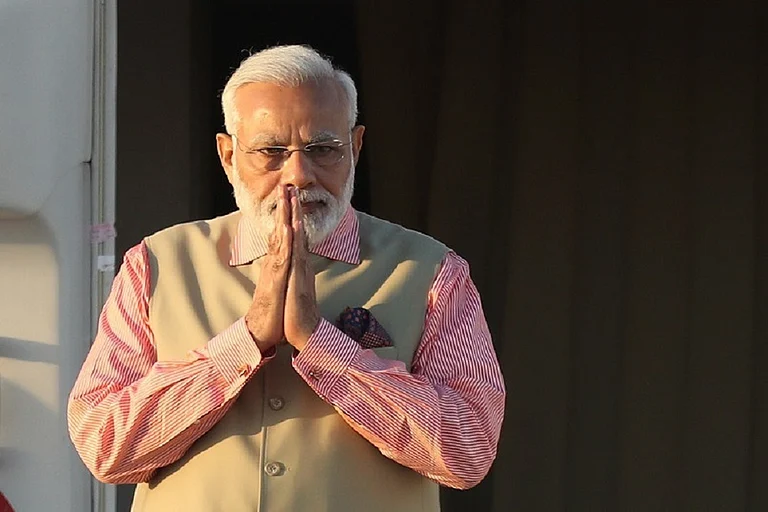January 22, 2024, is set to be a historic day in India. The Pran Pratishtha on this day signifies not just the consecration of Ram lalla, but a pivotal moment for India's collective consciousness, with the restoration of the Ayodhya temple to its full glory. January 22 will be remembered as the day of cultural and intellectual independence in history.
This is crucial, because the reclaiming of the land was accomplished without resorting to revenge or atrocities. Instead, the majority community utilised the power of democracy, the people's mandate; and legal processes to assert their rights peacefully. This unprecedented example in world history will set a precedent for nations, illustrating how a majority community can reclaim their land and rights through legal and constitutional means.
Hence, January 22, 2024, serves as an exemplary experience not only for India but for the entire world, capturing global attention. Focusing on the construction and structure of the temple, it is poised to become a model for the world. Despite the historical significance of the Ram Temple, the upcoming structure exudes unique splendour—magnificent, grand, and built on a robust foundation.
Simultaneously, it bears a cultural identity and history, re-emerging in full glory despite numerous instances of destruction and erasure. This embodies the essence of India, the new India, resurging with undiminished splendour. Magnificent, grand and steeped in a rich cultural history, the Ram Temple serves as an emblem -- enormous, glorious, powerful -- a cultural and historic centre that encapsulates both tradition and modernity.
The Ram Temple stands as a fitting symbol of New India. It would be a mistake to perceive it as a mere political development. If the political opposition views it solely through the lens of equations, electoral outcomes and appeasement, it risks a significant blunder in hindsight. The occurrence of the Ram Temple is not a political event; rather, it signifies a step in India's unity and cultural journey. It transcends the five-year election cycle and its results. Those viewing it through a political prism find themselves increasingly marginalised socially and politically. Calls to boycott the Pran Pratishtha ceremony should be reconsidered, as any boycott indicates a disconnect from the common people's psyche and a lack of resonance with India's sentiments. The temple's reconstruction marks a new chapter in India's reawakening and should be embraced by every Bharatvasi. Hence, people from diverse backgrounds, religions and countries are gearing up for celebrations, fostering a positive atmosphere. The few opposing voices receive little attention or time from society, reflecting a widespread readiness to welcome this significant milestone.
The entire consecration process bears a significant imprint of India's current political leadership. Prime Minister Narendra Modi's thoughts and style are evident in the entire Pran Pratishtha celebration, which is closely observed and emulated by the nation. This approach is inclusive, with participation seen from across India—a special characteristic of Modi's working style. The Ayodhya celebration is not limited to Ayodhya, but extends to every household and individual in India, ensuring widespread participation.
The entire nation is uniting in this, with preparations underway across the country for a major festival of lights (Deepotsava). Temples are adorned for festivities. Despite initial concerns, particularly after the Supreme Court verdict, that an atmosphere of frenzy and intolerance might prevail, the success of the prime minister's strategy is evident in the inclusive nature of the Pran Pratishtha, encompassing all sections of society.
When the Prime Minister advocated cleanliness at religious places, he didn't specify shrines of a particular religion. Attempts have been made to associate the PM's core ideas on cleanliness with the Ram Temple. Lal Krishna Advani, in an article, suggests that destiny itself has chosen the person for the Pran Pratishtha. Perhaps it's fate and fortune that have selected Modi for this task, resonating with Advani's understanding on a national scale.
The consecration of the Ram Temple on January 22, 2024, does not mark the end of a people's movement; rather, it signifies its commencement. This journey aims to transition from the Ram Temple to the Ram Rajya. The initial concept of the Ram Rajya, as perceived by the BJP and the common people, revolves around a government accessible to every citizen, ensuring resources for the most marginalised. In the envisioned Ram Rajya, national development corresponds to the development of each citizen, especially those historically left behind— the ignored castes, the untouched and the backward. The spirit of Ram Rajya involves bringing together women, the poor, farmers, youth, backward castes, tribes, and progressing inclusively with them, incorporating them into every objective. The Pran Pratishtha of the Ram Temple marks the initiation of steering the country in this direction.
After India achieved political independence, the rebuilding of the Somnath Temple raised expectations for the reconstruction of temples in Ayodhya, Mathura and Kashi. However, the construction of the Ram Temple faced multiple conspiracies and plots. Narratives emerged suggesting that building the temple was unnecessary; instead, some proposed constructing a school or college, even advocating for a toilet in place of the temple. False histories were taught, claiming Babar never destroyed temples. When the truth emerged, the argument shifted to questioning the temple's significance in providing sustenance, healthcare or education. However, the construction of the glorious Kashi Vishwanath Temple proved that building a temple could generate employment and support the establishment of educational and medical institutions, serving as an economic catalyst. Successful examples in Kashi, Kedarnath and other religious places showcase positive economic changes under the Modi government. This underscores that the construction in Ayodhya involves more than just a temple—it includes the development of an airport. Ayodhya is witnessing the emergence of professionals for various institutions and the tourism industry is thriving. Working on cultural and spiritual consciousness not only preserves heritage but also opens paths for economic development. Kashi has transformed into not just a spiritual centre but also a tourist destination. Recent data indicates that more tourists visited Kashi than Goa last year. Regarding the Ayodhya temple, estimates suggest that the number of devotees visiting to glimpse Ram lalla will surpass visitors to the Tirupati temple by eight to ten times.
As the temple is constructed and devotees begin to arrive, the economy of the nearby areas will naturally develop. Recognising this, the government is investing in major corridors, highways, expressways and an airport. False histories and baseless narratives surrounding the temple have been debunked by society itself. Consequently, all communities and classes are now enthusiastic about the temple's construction. The relentless attack on India's social consciousness and cultural understanding is almost defeated with the temple's emergence, leading people—especially the youth—to discern the truth. This is evident not just among the elderly but also among the youth in Kashi, Kedarnath, and Mathura. They are beginning to understand religion, history and challenge false narratives, embodying the image of a self-respecting India.
In Ayodhya, the Pran Pratishtha of the Ram Temple will be conducted at the hands of the Prime Minister—an amazing coincidence. Modi was part of the rath yatra at a time when the nation's majority was not directly involved in the temple-building movement, despite being emotionally connected. The same person who planned and managed the Jan-Jagran Yatra, going door-to-door in distant parts of the country to collect Ram Shilas (bricks) for the temple's construction, is now set to perform the consecration.
The magnificent Ram Temple and the transforming landscape of Saket Nagri (Ayodhya) signify that the construction and Pran Pratishtha of the temple will propel India towards unparalleled prosperity. Simultaneously, it aligns the country's governance with the ideals of integral humanism (ekatm manavavad) and Antyodaya, as envisioned by Deen Dayal Upadhyay.
(The author is a former BJP MLA from Delhi. Views expressed are personal. Outlook does not endorse or oppose the views)





















